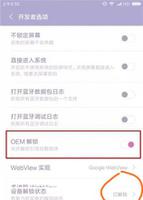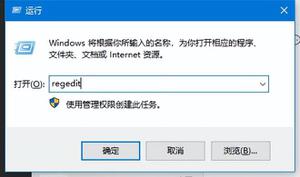IntrotoSpringBootStarters

Spring Boot starters were built to address exactly this problem. Starter POMs are a set of convenient dependency descriptors that you can include in your application. You get a one-stop-shop for all the Spring and related technology that you need, without having to hunt through sample code and copy-paste loads of dependency descriptors.
We have more than 30 Boot starters available – let"s see some of them in the following sections.
2. The Web Starter
First, let"s look at developing the REST service; we can use libraries like Spring MVC, Tomcat and Jackson – a lot of dependencies for a single application.
Spring Boot starters can help to reduce the number of manually added dependencies just by adding one dependency. So instead of manually specifying the dependencies just add one starter as in the following example:
1
2
3
4
<
dependency
>
<
groupId
>org.springframework.boot</
groupId
>
<
artifactId
>spring-boot-starter-web</
artifactId
>
</
dependency
>
Now we can create a REST controller. For the sake of simplicity we won"t use the database and focus on the REST controller:
1
2
3
4
5
6
7
8
9
10
11
12
13
14
15
16
17
18
19
20
21
22
@RestController
public
class
GenericEntityController {
private
List<GenericEntity> entityList =
new
ArrayList<>();
@RequestMapping
(
"/entity/all"
)
public
List<GenericEntity> findAll() {
return
entityList;
}
@RequestMapping
(value =
"/entity"
, method = RequestMethod.POST)
public
GenericEntity addEntity(GenericEntity entity) {
entityList.add(entity);
return
entity;
}
@RequestMapping
(
"/entity/findby/{id}"
)
public
GenericEntity findById(
@PathVariable
Long id) {
return
entityList.stream().
filter(entity -> entity.getId().equals(id)).
findFirst().get();
}
}
The GenericEntity is a simple bean with id of type Long and value of type String.
That"s it – with the application running, you can access http://localhost:8080/entity/all and check the controller is working.
We have created a REST application with quite a minimal configuration.
3. The Test Starter
For testing we usually use the following set of libraries: Spring Test, JUnit, Hamcrest, and Mockito. We can include all of these libraries manually, but Spring Boot starter can be used to automatically include these libraries in the following way:
1
2
3
4
5
<
dependency
>
<
groupId
>org.springframework.boot</
groupId
>
<
artifactId
>spring-boot-starter-test</
artifactId
>
<
scope
>test</
scope
>
</
dependency
>
Notice that you don"t need to specify the version number of an artifact. Spring Boot will figure out what version to use – all you need to specify is the version of spring-boot-starter-parent artifact. If later on you need to upgrade the Boot library and dependencies, just upgrade the Boot version in one place and it will take care of the rest.
Let"s actually test the controller we created in the previous example.
There are two ways to test the controller:
- Using the mock environment
- Using the embedded Servlet container (like Tomcat or Jetty)
In this example we"ll use a mock environment:
1
2
3
4
5
6
7
8
9
10
11
12
13
14
15
16
17
18
19
20
21
22
23
24
@RunWith
(SpringJUnit4ClassRunner.
class
)
@SpringApplicationConfiguration
(classes = Application.
class
)
@WebAppConfiguration
public
class
SpringBootApplicationIntegrationTest {
@Autowired
private
WebApplicationContext webApplicationContext;
private
MockMvc mockMvc;
@Before
public
void
setupMockMvc() {
mockMvc = MockMvcBuilders.webAppContextSetup(webApplicationContext).build();
}
@Test
public
void
givenRequestHasBeenMade_whenMeetsAllOfGivenConditions_thenCorrect()
throws
Exception {
MediaType contentType =
new
MediaType(MediaType.APPLICATION_JSON.getType(),
MediaType.APPLICATION_JSON.getSubtype(), Charset.forName(
"utf8"
));
mockMvc.perform(MockMvcRequestBuilders.get(
"/entity/all"
)).
andExpect(MockMvcResultMatchers.status().isOk()).
andExpect(MockMvcResultMatchers.content().contentType(contentType)).
andExpect(jsonPath(
"$"
, hasSize(
4
)));
}
}
The above test calls the /entity/all endpoint and verifies that the JSON response contains 4 elements. For this test to pass, we also have to initialize our list in the controller class:
1
2
3
4
5
6
7
8
9
10
11
public
class
GenericEntityController {
private
List<GenericEntity> entityList =
new
ArrayList<>();
{
entityList.add(
new
GenericEntity(1l,
"entity_1"
));
entityList.add(
new
GenericEntity(2l,
"entity_2"
));
entityList.add(
new
GenericEntity(3l,
"entity_3"
));
entityList.add(
new
GenericEntity(4l,
"entity_4"
));
}
//...
}
What is important here is that @WebAppConfiguration annotation and MockMVC are part of the spring-test module, hasSize is a Hamcrest matcher, and @Before is a JUnit annotation. These are all available by importing one this one starter dependency.
4. The Data JPA Starter
Most web applications have some sort of persistence – and that"s quite often JPA.
Instead of defining all of the associated dependencies manually – let"s go with the starter instead:
1
2
3
4
5
6
7
8
9
<
dependency
>
<
groupId
>org.springframework.boot</
groupId
>
<
artifactId
>spring-boot-starter-data-jpa</
artifactId
>
</
dependency
>
<
dependency
>
<
groupId
>com.h2database</
groupId
>
<
artifactId
>h2</
artifactId
>
<
scope
>runtime</
scope
>
</
dependency
>
Notice that out of the box we have automatic support for at least the following databases: H2, Derby and Hsqldb. In our example, we"ll use H2.
Now let"s create the repository for our entity:
1
public
interface
GenericEntityRepository
extends
JpaRepository<GenericEntity, Long> {}
Time to test the code. Here is the JUnit test:
1
2
3
4
5
6
7
8
9
10
11
12
13
14
15
16
17
18
@RunWith
(SpringJUnit4ClassRunner.
class
)
@SpringApplicationConfiguration
(classes = Application.
class
)
public
class
SpringBootJPATest {
@Autowired
private
GenericEntityRepository genericEntityRepository;
@Test
public
void
givenGenericEntityRepository_whenSaveAndRetreiveEntity_thenOK() {
GenericEntity genericEntity =
genericEntityRepository.save(
new
GenericEntity(
"test"
));
GenericEntity foundedEntity =
genericEntityRepository.findOne(genericEntity.getId());
assertNotNull(foundedEntity);
assertEquals(genericEntity.getValue(), foundedEntity.getValue());
}
}
We didn"t spend time on specifying the database vendor, URL connection, and credentials. No extra configuration is necessary as we"re benefiting from the solid Boot defaults; but of course all of these details can still be configured if necessary.
5. The Mail Starter
A very common task in enterprise development is sending email, and dealing directly with Java Mail API usually can be difficult.
Spring Boot starter hides this complexity – mail dependencies can be specified in the following way:
1
2
3
4
<
dependency
>
<
groupId
>org.springframework.boot</
groupId
>
<
artifactId
>spring-boot-starter-mail</
artifactId
>
</
dependency
>
Now we can directly use the JavaMailSender, so let"s write some tests.
For the testing purpose, we need a simple SMTP server. In this example, we"ll use Wiser. This is how we can include it in our POM:
1
2
3
4
5
6
<
dependency
>
<
groupId
>org.subethamail</
groupId
>
<
artifactId
>subethasmtp</
artifactId
>
<
version
>3.1.7</
version
>
<
scope
>test</
scope
>
</
dependency
>
The latest version of Wiser can be found on Maven central repository.
Here is the source code for the test:
1
2
3
4
5
6
7
8
9
10
11
12
13
14
15
16
17
18
19
20
21
22
23
24
25
26
27
28
29
30
31
32
33
34
35
36
37
38
39
40
41
42
43
44
45
46
47
48
49
50
51
52
53
54
55
56
57
58
@RunWith
(SpringJUnit4ClassRunner.
class
)
@SpringApplicationConfiguration
(classes = Application.
class
)
public
class
SpringBootMailTest {
@Autowired
private
JavaMailSender javaMailSender;
private
Wiser wiser;
private
String userTo =
"user2@localhost"
;
private
String userFrom =
"user1@localhost"
;
private
String subject =
"Test subject"
;
private
String textMail =
"Text subject mail"
;
@Before
public
void
setUp()
throws
Exception {
final
int
TEST_PORT =
25
;
wiser =
new
Wiser(TEST_PORT);
wiser.start();
}
@After
public
void
tearDown()
throws
Exception {
wiser.stop();
}
@Test
public
void
givenMail_whenSendAndReceived_thenCorrect()
throws
Exception {
SimpleMailMessage message = composeEmailMessage();
javaMailSender.send(message);
List<WiserMessage> messages = wiser.getMessages();
assertThat(messages, hasSize(
1
));
WiserMessage wiserMessage = messages.get(
0
);
assertEquals(userFrom, wiserMessage.getEnvelopeSender());
assertEquals(userTo, wiserMessage.getEnvelopeReceiver());
assertEquals(subject, getSubject(wiserMessage));
assertEquals(textMail, getMessage(wiserMessage));
}
private
String getMessage(WiserMessage wiserMessage)
throws
MessagingException, IOException {
return
wiserMessage.getMimeMessage().getContent().toString().trim();
}
private
String getSubject(WiserMessage wiserMessage)
throws
MessagingException {
return
wiserMessage.getMimeMessage().getSubject();
}
private
SimpleMailMessage composeEmailMessage() {
SimpleMailMessage mailMessage =
new
SimpleMailMessage();
mailMessage.setTo(userTo);
mailMessage.setReplyTo(userFrom);
mailMessage.setFrom(userFrom);
mailMessage.setSubject(subject);
mailMessage.setText(textMail);
return
mailMessage;
}
}
In the test, the @Before and @After methods are in charge of starting and stopping the mail server.
Notice that we"re wiring in the JavaMailSender bean – the bean was automatically created by Spring Boot.
Just like any other defaults in Boot, the email settings for the JavaMailSender can be customized in application.properties:
1
2
3
spring.mail.host=localhost
spring.mail.port=25
spring.mail.properties.mail.smtp.auth=false
So we configured the mail server on localhost:25 and we didn"t require authentication.
6. Conclusion
In this article we have given an overview of Starters, explained why we need them and provided examples on how to use them in your projects.
Let"s recap the benefits of using Spring Boot starters:
- increase pom manageability
- production-ready, tested & supported dependency configurations
- decrease the overall configuration time for the project
The actual list of starters can be found here. Source code for the examples can be found here.
以上是 IntrotoSpringBootStarters 的全部内容, 来源链接: utcz.com/z/513012.html







